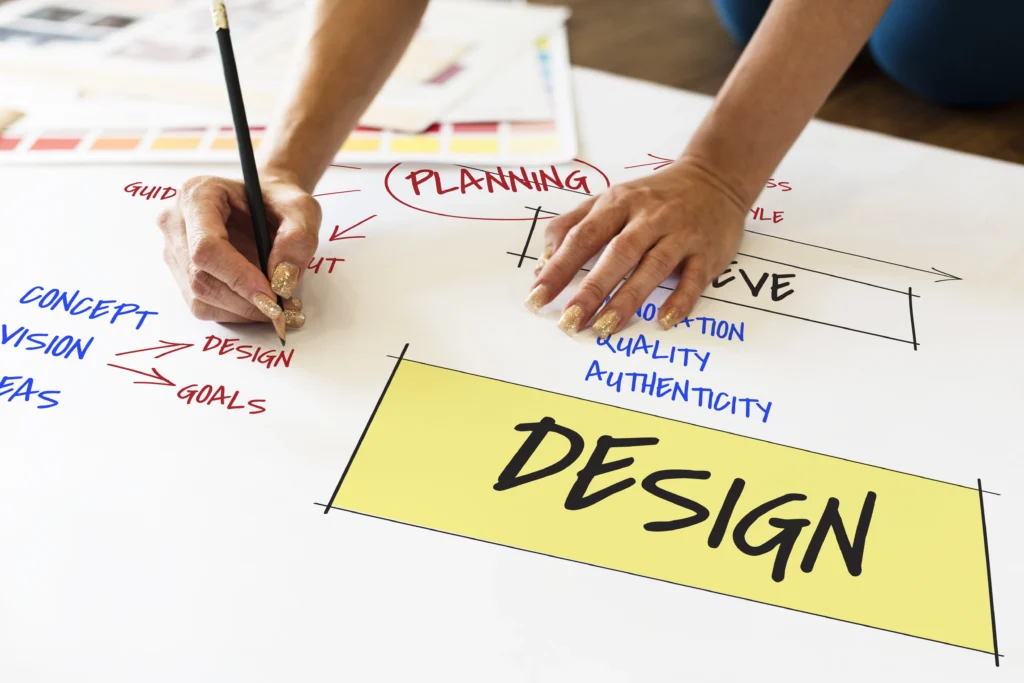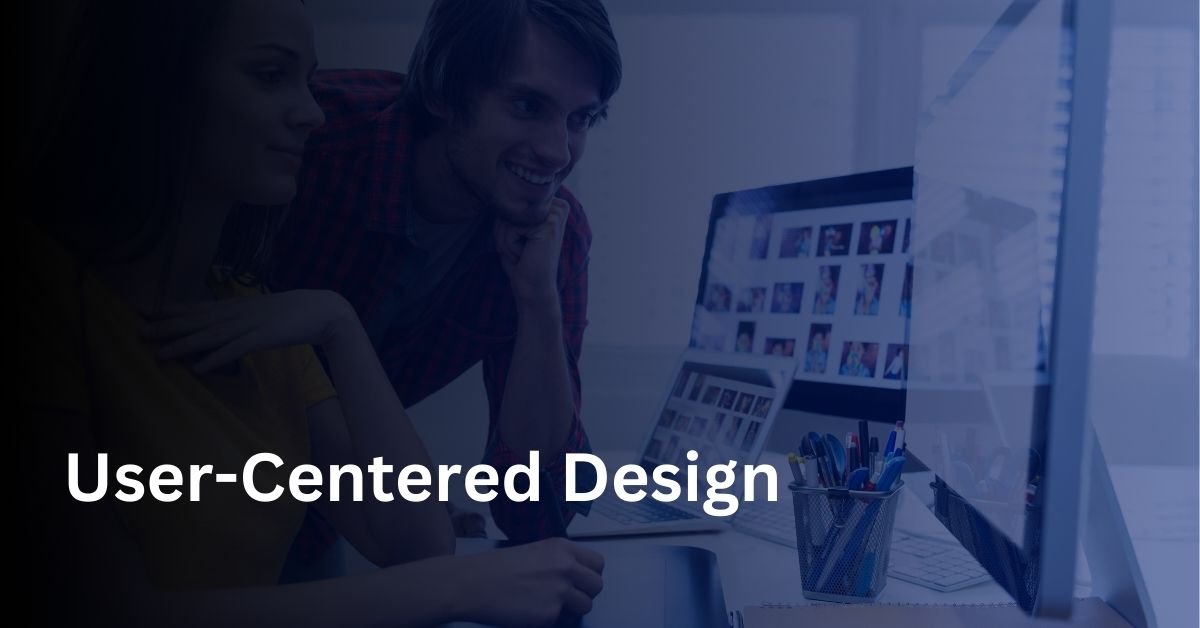In today’s fast-paced digital world, User-Centered Design (UCD) has become more crucial than ever. Companies are realizing that customer satisfaction hinges not only on product quality but also on how easy and intuitive their designs are for the users. As we move into 2024, the importance of creating customer-focused designs continues to grow, with the added pressure of staying relevant in an increasingly competitive landscape. In this article, we will explore the key reasons why User-Centered Design matters and the trends shaping its future.
Why User-Centered Design is Crucial

User-centered design is about putting the user at the heart of your design process. It ensures that products and services are tailored to the needs, behaviors, and preferences of real people, rather than what the business assumes they need. This methodology has been proven to improve customer satisfaction, reduce user frustration, and boost engagement.
But why is this important in 2024? Because users expect more. With the rise of technology, users are now more accustomed to smooth, seamless experiences. They are less tolerant of clunky, hard-to-use products. If your design fails to meet their expectations, they will switch to a competitor in a heartbeat.
A McKinsey study showed that companies that focus on customer experience see revenue increases of 10% to 15%, while also reducing costs by 15% to 20%. This highlights the direct link between user-centered design and business growth, making it a necessity for businesses to stay competitive.
But why is this important in 2024? Because users expect more. With the rise of technology, users are now more accustomed to smooth, seamless experiences. They are less tolerant of clunky, hard-to-use products. If your design fails to meet their expectations, they will switch to a competitor in a heartbeat.
A McKinsey study showed that companies that focus on customer experience see revenue increases of 10% to 15%, while also reducing costs by 15% to 20%. This highlights the direct link between user-centered design and business growth, making it a necessity for businesses to stay competitive.
Key Trends Shaping User-Centered Design in 2024

As we head into 2024, several key trends are emerging in the field of user-centered design. Businesses looking to stay ahead should focus on these trends to ensure they continue delivering exceptional customer experiences.
1. Personalization and Customization
Consumers today want experiences that feel personalized to their needs. Leveraging data analytics and AI allows businesses to create personalized user experiences, from tailored product recommendations to customizable interfaces. In 2024, expect to see more companies investing in personalization as a core component of their design strategy.
2. Accessibility for All Users
Inclusive design is no longer optional—it’s a requirement. Accessibility, which ensures that digital platforms are usable by people of all abilities, has become increasingly critical. Companies need to make their websites, apps, and products accessible to everyone, including users with disabilities. In fact, in 2024, we’ll see more companies integrating WCAG standards (Web Content Accessibility Guidelines) to broaden their reach and ensure compliance with legal standards.
3. Simplicity and Minimalism
User-centered design is moving towards simplicity and minimalism, focusing on ease of use rather than flashy, complex designs. This trend is driven by the need to reduce cognitive load and help users complete tasks quickly. A clean, intuitive interface not only improves usability but also boosts conversion rates.
4. AI-Driven User Insights
Artificial Intelligence (AI) and machine learning are increasingly playing a role in optimizing user-centered design. These technologies can analyze user behavior, providing insights that help businesses refine their designs in real-time. In 2024, AI will be critical for improving user interfaces and personalizing experiences based on user preferences.
5. Sustainability and Ethical Design
Consumers are becoming more conscious of the ethical implications of their purchases. User-centered design in 2024 will take into account not just usability, but also the ethical and environmental impact of a product. Expect to see companies promoting eco-friendly and socially responsible design practices to appeal to the growing base of conscious consumers.
1. Personalization and Customization
Consumers today want experiences that feel personalized to their needs. Leveraging data analytics and AI allows businesses to create personalized user experiences, from tailored product recommendations to customizable interfaces. In 2024, expect to see more companies investing in personalization as a core component of their design strategy.
2. Accessibility for All Users
Inclusive design is no longer optional—it’s a requirement. Accessibility, which ensures that digital platforms are usable by people of all abilities, has become increasingly critical. Companies need to make their websites, apps, and products accessible to everyone, including users with disabilities. In fact, in 2024, we’ll see more companies integrating WCAG standards (Web Content Accessibility Guidelines) to broaden their reach and ensure compliance with legal standards.
3. Simplicity and Minimalism
User-centered design is moving towards simplicity and minimalism, focusing on ease of use rather than flashy, complex designs. This trend is driven by the need to reduce cognitive load and help users complete tasks quickly. A clean, intuitive interface not only improves usability but also boosts conversion rates.
4. AI-Driven User Insights
Artificial Intelligence (AI) and machine learning are increasingly playing a role in optimizing user-centered design. These technologies can analyze user behavior, providing insights that help businesses refine their designs in real-time. In 2024, AI will be critical for improving user interfaces and personalizing experiences based on user preferences.
5. Sustainability and Ethical Design
Consumers are becoming more conscious of the ethical implications of their purchases. User-centered design in 2024 will take into account not just usability, but also the ethical and environmental impact of a product. Expect to see companies promoting eco-friendly and socially responsible design practices to appeal to the growing base of conscious consumers.
How to Implement it

Implementing a user-centered design approach requires a shift in thinking. Rather than designing based on assumptions, businesses must conduct thorough user research to understand their audience. Here’s how you can start putting your customers first:
1. Conduct User Research
The foundation lies in understanding the user. This involves gathering data through interviews, surveys, and usability testing to identify user needs, pain points, and preferences. The insights from this research will guide the design process and help you create products that truly resonate with your audience.
2. Create User Personas
Once you’ve conducted your research, create detailed user personas that represent different segments of your target audience. These personas will help you design with a clear understanding of who you’re trying to reach and what their specific needs are.
3. Prototype and Test
Prototyping and testing are critical components of user-centered design. By creating wireframes and prototypes, you can gather feedback early and iterate based on real user input. Testing ensures that the final product meets the user’s needs and expectations before going live.
4. Focus on Usability
Usability is key to any user-centered design. Focus on simplicity, clarity, and consistency to create an experience that users will find easy and enjoyable to navigate. Pay attention to how users interact with your product and make adjustments to improve their overall experience.
1. Conduct User Research
The foundation lies in understanding the user. This involves gathering data through interviews, surveys, and usability testing to identify user needs, pain points, and preferences. The insights from this research will guide the design process and help you create products that truly resonate with your audience.
2. Create User Personas
Once you’ve conducted your research, create detailed user personas that represent different segments of your target audience. These personas will help you design with a clear understanding of who you’re trying to reach and what their specific needs are.
3. Prototype and Test
Prototyping and testing are critical components of user-centered design. By creating wireframes and prototypes, you can gather feedback early and iterate based on real user input. Testing ensures that the final product meets the user’s needs and expectations before going live.
4. Focus on Usability
Usability is key to any user-centered design. Focus on simplicity, clarity, and consistency to create an experience that users will find easy and enjoyable to navigate. Pay attention to how users interact with your product and make adjustments to improve their overall experience.
Conclusion
As we move towards the future, businesses must recognize the growing importance of user-centered design. Prioritizing the needs of your customers is essential to building products that stand out in today’s competitive market. By keeping up with trends such as personalization, accessibility, and ethical design, and by continually testing and iterating based on user feedback, companies can ensure they’re delivering exceptional customer experiences.
In the ever-evolving world of user-centered design, those who put their customers first will undoubtedly thrive.



